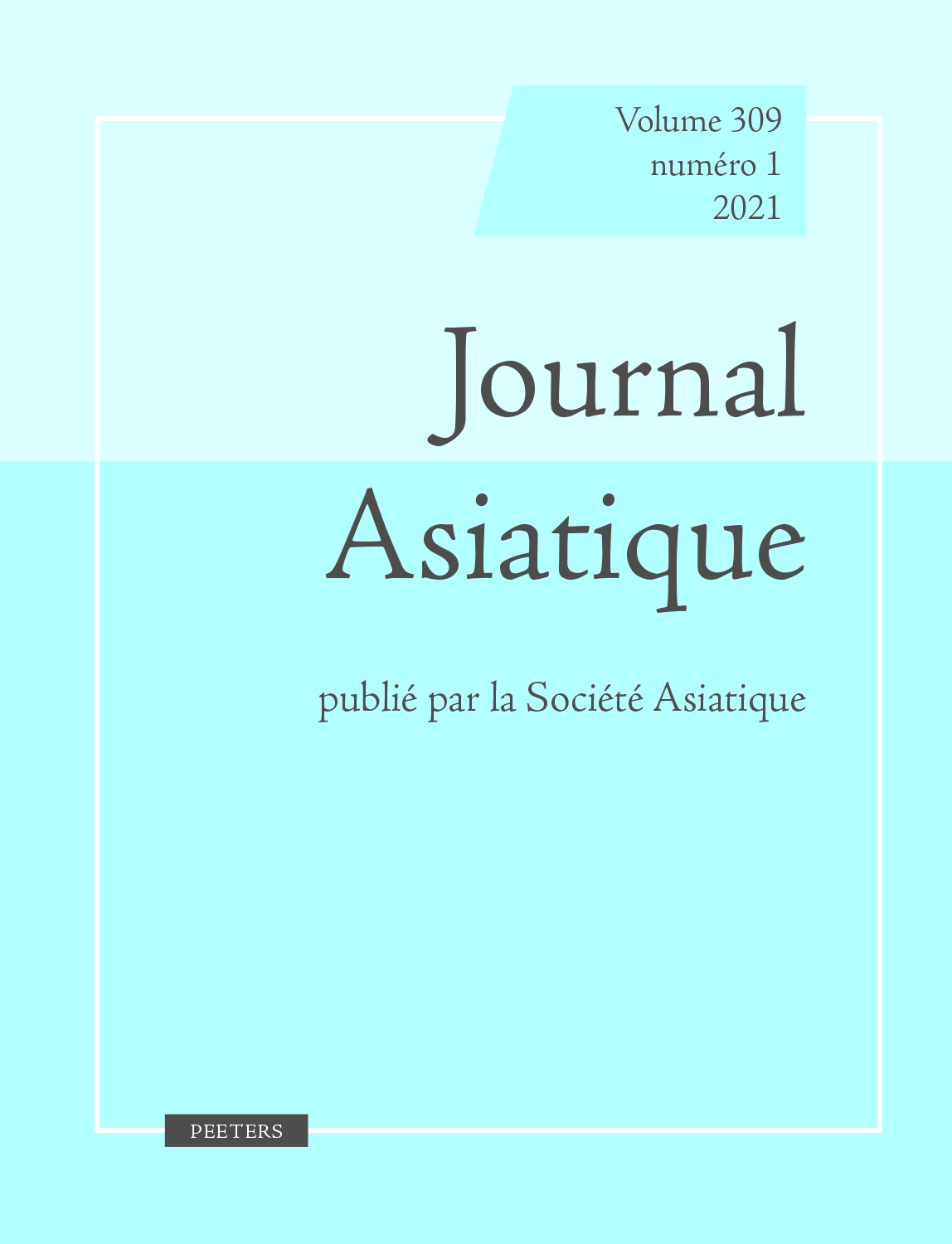 previous article in this issue previous article in this issue | next article in this issue  |

Preview first page |
Document Details : Title: The Aramaic Source of the East Asian Word for 'Buddhist Monastery' Subtitle: On the Spread of Central Asian Monasticism in the Kushan Period Author(s): BECKWITH, Christopher I. Journal: Journal Asiatique Volume: 302 Issue: 1 Date: 2014 Pages: 111-138 DOI: 10.2143/JA.302.1.3030680 Abstract : Although the foreign origin of East Asian Buddhism is well known, the words for ‘Buddhist monastery’ in Chinese, Japanese, and Korean have been explained through folk etymology. These words have recently been shown to have the same proximal source, Late Old Chinese *dēʁa. It is now shown that this native Late Old Chinese word was itself disyllabic, and the character was used to write a loanword, Aramaic dērā ~ dayrā ‘communal religious dwelling, monastery’, which was introduced to China by Central Asian Buddhist translators at about the same time as the appearance of the earliest archaeologically attested Buddhist monasteries, located in Taxila, eastern Gandhāra. The available data on the appearance and naming of the monastery clarify that it developed first among the Buddhists of Central Asia proper, where it was given an Aramaic name (dērā); it later appeared in Loyang, China (*dēʁa ~ *dēʁâ) and in Taxila; and about two centuries later, when the Christian monastery appeared in the Near East, it too was called a dērā ~ dayrā, which is the word for it to this day throughout the region. |
|


